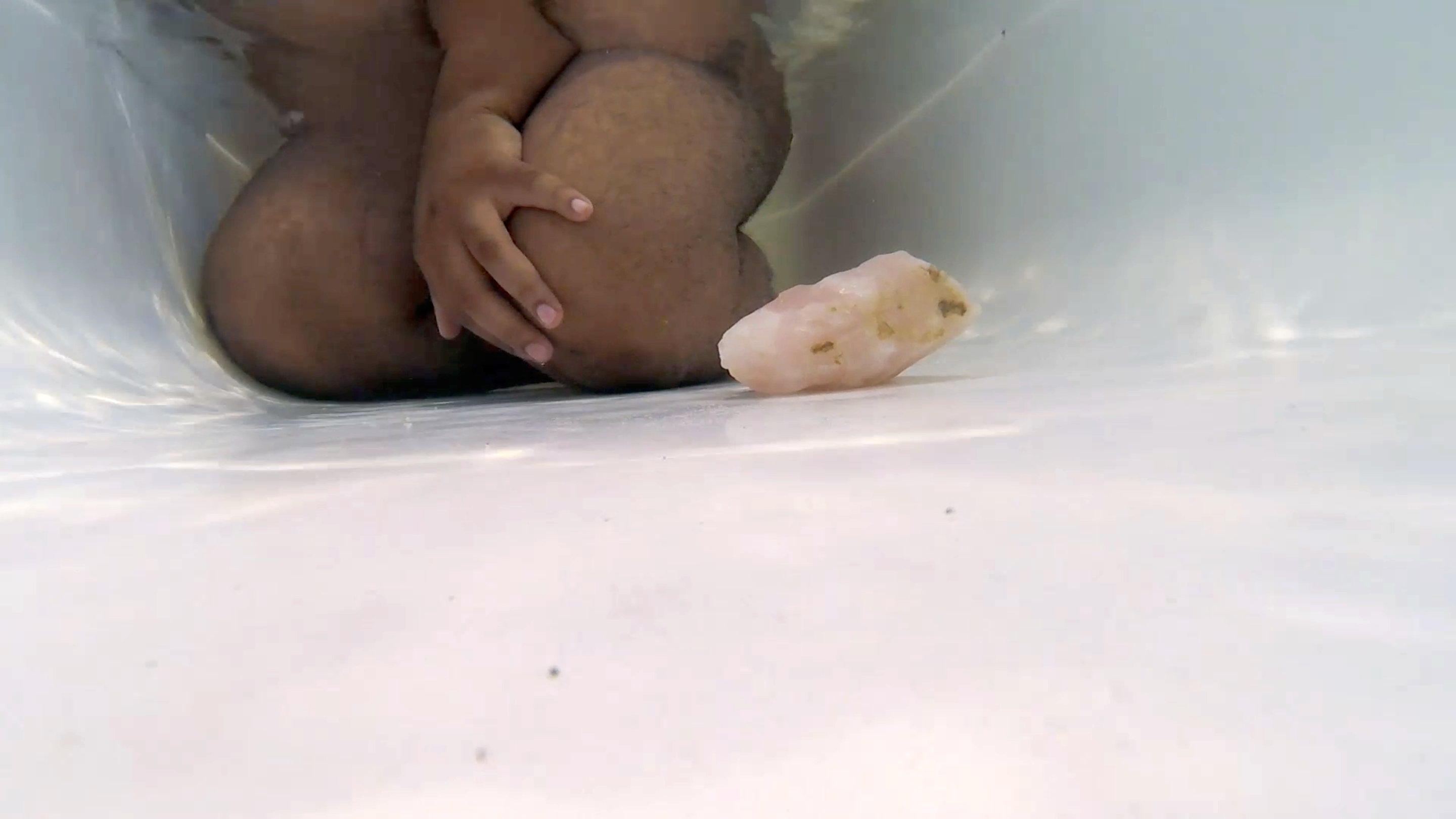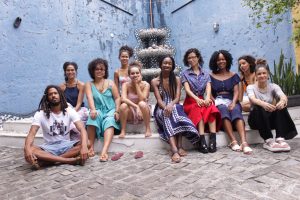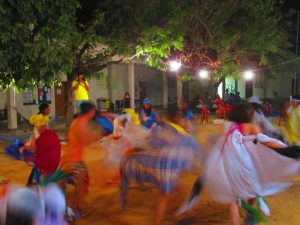This interview has been edited for clarity and length, and translated for our readers in Brazil. Leia este artigo em português.
Amina: Hi João. I was looking at the prints made of the unfolded plastic animal skins and I think we share an interest in what exists beyond the surface of our everyday. As you put it so well, I see your interest in “a force capable of rupturing the surface of that to which we’ve become used.”Is there anything you hope to find in the unfolding of a body? In the rupturing of the surface? Is there anything that you haven’t found yet? What keeps you going in this exploration?
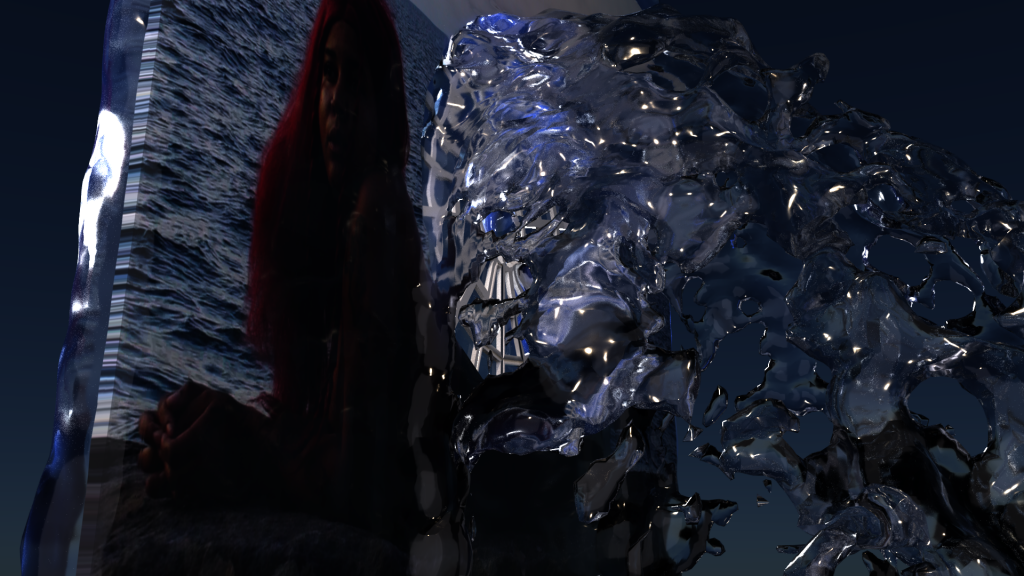
João: Amina, hi! I will try to answer as best as I can, because these questions don’t have easy or immediate answers. I still haven’t found out anything, and I don’t think I’ve ever done it for an answer or for what I expect to find. I keep exploring because of the moving force that even the most banal question can have. In that sense, this is where the surface is ruptured. One question moves another and keeps going.
What I want to say (maybe we can agree on that) is that, sometimes, answers can come too easily, and as an artist, I think this can be a dangerous field… Answers can appease a small volcano and I don’t want to be appeased… My attempt is then to exercise my gaze and find my own perspective about what appears before me. Maybe my works are precisely the impossibility of giving an answer.
Looking at your works, I saw the strong relation that they have with the three-dimensional, but not just that. In my case, I come from engraving and understand engraving as possessing a certain three-dimensionality because in the print nothing is flat. I went from the two-dimensional to the three-dimensional (taking the engraving to the body and thinking it as a graphic space, capable of imprinting its marks, folds, creases) and then doing the reverse path (appropriating three-dimensional plastic animals and transforming them in matrices and printing them). How do you see this transit in your work? I started musing about your creative process because you work with both the two- and three-dimensional, the digital and the physical, and with your own body, in some way, as in “Soft Interiors”. Could you tell me more about these relations?
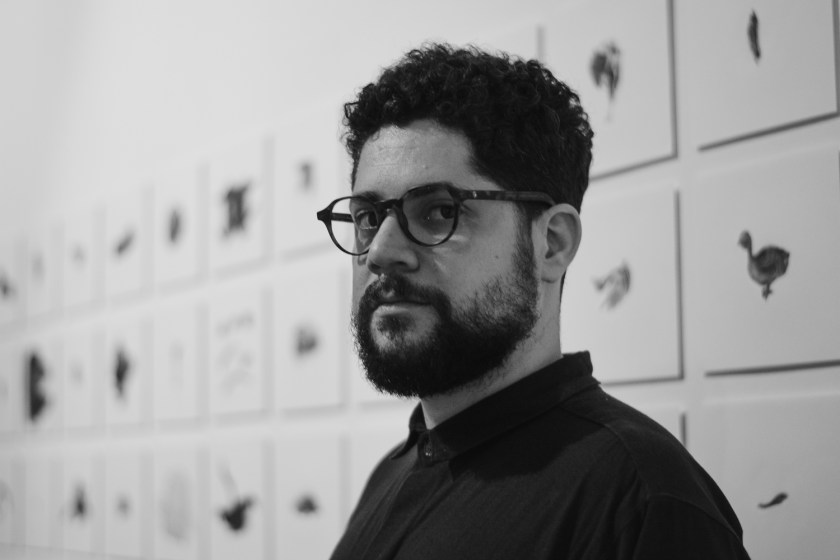
Amina: Before I answer the questions you’ve posed I want to respond with a deep appreciation for your fondness of questions and the art of asking. I think a lot about the divine nature of mystery and of not-knowing. It is my fascination with the mysterious components of this world and beyond that keep me making. Beyond asking for the sake of answers, I do think there are discoveries that exist beyond answers but still matter. Many of these small discoveries have come through what you’re describing (so beautifully!) as the transit between dimensions and spaces. The transit between the two-dimensional and the three-dimensional, the digital and the physical, my body and the object.
I am intrigued by liminality, which I hold as the in-between space of mystery, of not-knowing, where possibilities of what is and what can be open up. My interest in the liminal is informed in many ways by my relationship to my own sexuality, race, gender, ethnicity, and an understanding of identity as an unfixed thing, in essence my interest in liminality comes from my embodied experience. And in moving from that space I find myself pursuing the space of the in-between across mediums. In the socio-political realm of our world, I am curious about how liminality, bridge-building, not-knowing, question-asking, and the dissolution of borders between “here” and “there” can function as real and imaginative modes of pursuing our world’s problems.
I’ll return to the words you shared in discussing printing,“nothing is flat”. I think that the absence of flatness can be applied to other aspects of our world. For example, in spite of the television screen’s desire to disappear its body and realize itself as an unhoused floating image, a flat screen tv is far from flat. And in spite of how reduced sociopolitical concepts become when filtered through news media, no problem is a flat problem.
I want to ask you something about flatness or surface, architectural structure and the body. How do you see these things functioning within your work?
João: It’s funny that just yesterday I was watching a show and at a certain moment in the story, one of the characters said something like: “Can I ask if I’m asking the right question?” This same question I constantly ask myself, because it opens up room for everything that we don’t know and that we neglect when we ask a certain question. In the past years, I have tried to incorporate ever more the not-knowing in my work, because we see ourselves surrounded by information, obliged to know everything all the time, especially in certain art spaces. I don’t like the idea of ‘research’ [‘pesquisa’] because it brings things near to a field that is very pragmatic and that scares and distances me, so I prefer to think about ‘seeking’ [‘busca’] because, even if only in my semantic reading of the word, it allows me a path of utterances and incongruities that interests me much more. I like to think as I make, with my hands, because at a certain level, I like having no idea what I am making and I have sought the not-knowing as a legitimate method. Something like not knowing, but needing to do it, a knowing that is more based on intuition than on a kind of scientific pragmatism. This does not mean being alienated from my own work, on the contrary, it means putting myself in a state of openness such that allows me to be traversed by the “possibilities of what is and what can be,” as you wrote. We need to have some confidence in the process, and I go on this way because I cannot do it any other way.
In that sense, responding more directly to your last question, I have to agree with you because everything comes from my corporeal experience, from a desire-impetus-attempt to rupture this cellophane membrane that muddles the unknown. I will answer with a work that is titled “como poderia eu de outro modo aproximar-me dele?” [“how could I otherwise approach him?”] (you can see the question there again) which relates to this flatness or surface, an architectural structure and the body. This work was developed from the relationship with a house designed by architect Lina Bo Bardi, called Coati. From the reliefs that raise from the natural surface, I tried to find in my body, wrinkled, frowned, the depressions that remake this architecture — a sort of counter-form of the man, made by him, for him and in his scale — that envelopes his body, discloses his pleats and points out his shadows.
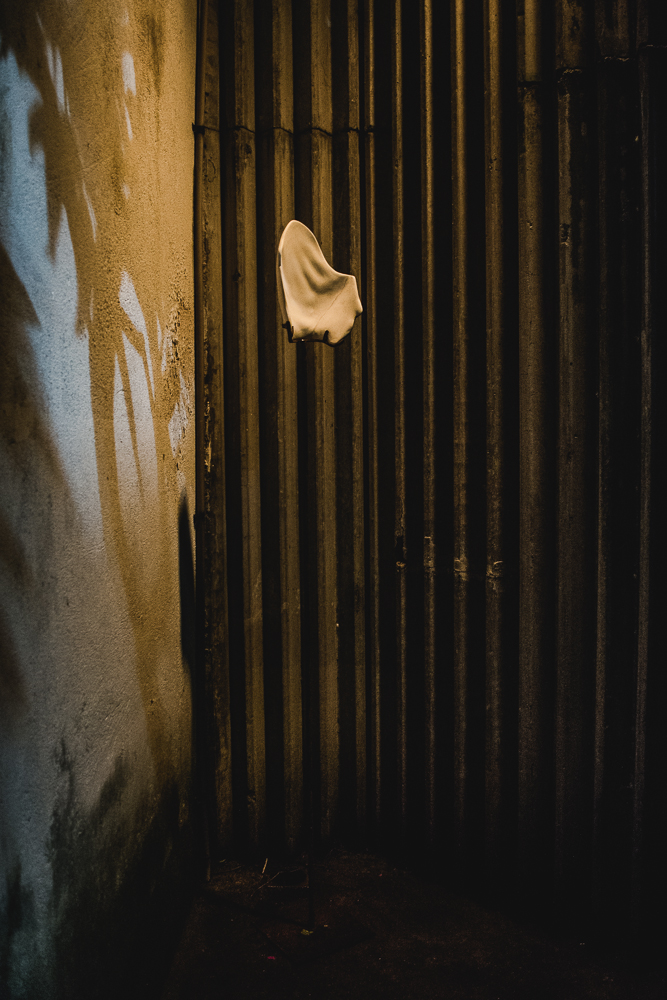
Finally, I would like to ask you to reply with one of your works. I am thinking specifically about a frame in this video: it says, ‘I don’t want to manifest my fears.’ What are your fears and how do they interfere in your work? My fears are many and they cannot be planified or flattened… in Brazil, in the current political conjuncture, being gay…
Amina: Thank you for your vulnerability in beginning to share your fears with me. These are scary times, the sort of violence directed at queer people, black people, poor people, immigrants … is undeniable, hypervisible, and deeply felt. At the time of that work you mentioned, “if today never gives up in me” [‘se o hoje nunca desistir de mim’], I was experiencing high levels of anxiety, I was at the edge of myself and in the process of great change within my interpersonal life, my relationships, and understanding of myself. On a structural and cultural level, there had been a string of police shootings of unarmed black people within the U.S. that stirred up fear, anger, sadness, and the necessity for change in me and in those around me. I felt a sort of upswell of pain and energy towards a destruction of what I have been calling “the old ways”, (colonial-white-supremacist-cis-hetero…) systems of control, management, power and oppression. While I understand these ways are not old yet, naming them old has been a sort of practice of imagining a world without these gross systems of harm and violence. Imagining has been a space of moving through my fear.
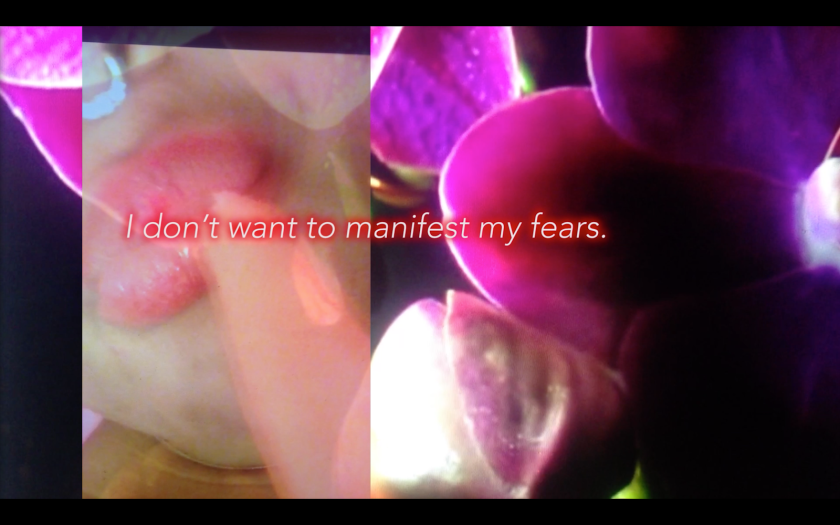
When I am unable to move through my fear, when it remains stagnant or isn’t allowed to be expressed, I’ve felt my fears materialize as illness in my body, in my stomach or through upper respiratory infections, painful coughs and colds. I found myself being very sick very often, pushed over the edge of myself by fear.
This happens now too, less often, I’ve been collecting skills and tools and forms of medicine, conventional and experimental, to help me move through it. I have also found my work to be a way to move through my fear, to process my fear, to internally transform (or transmute) this energy through a process of analysis (often in the form of meditation) and love and to then externalize something that is hopefully creative and imaginative. In that way my pain, fear, or anxiety becomes a portal into what I value most. I think so far, it has only been when my fear paralyzes me, that it impedes my work, but when I am able to hold my fear, to look at it and care for it with the tools I’ve collected, my fear becomes my magic.
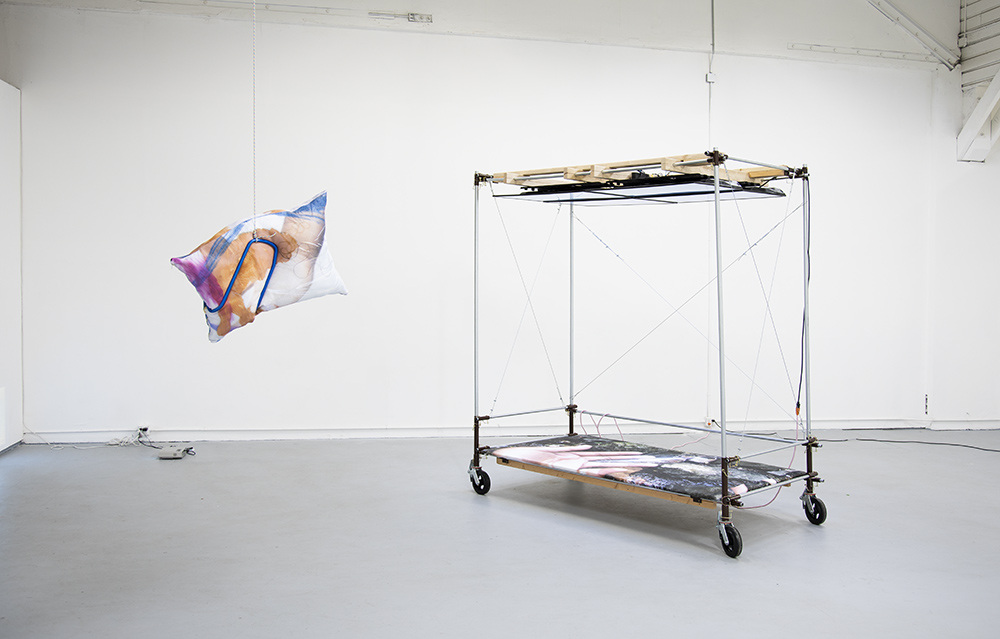
I was reading this book called The Body Keeps The Score, by Bessel van der Kolk. There’s a part of the introduction where the author talks about the ways that trauma has the ability to impact our capacity to imagine. I think about that a lot, and the importance of practicing imagining and dreaming. My work in 3D animation, specifically through simulating water in virtual space, has provided me with exercise in imagining, in being able to determine the physical conditions of a space through a program, to set a simulation of water into a set of constructed physical conditions and see what happens. This process has allowed me both a sense of control and releasing control, which I think is also connected to the process of imagining or speculating, there is a balance between openness and focused intention.
I am curious about what you do with your fear? What you imagine for your future? For the future of the people you love? And if and how these things may intersect with your work.
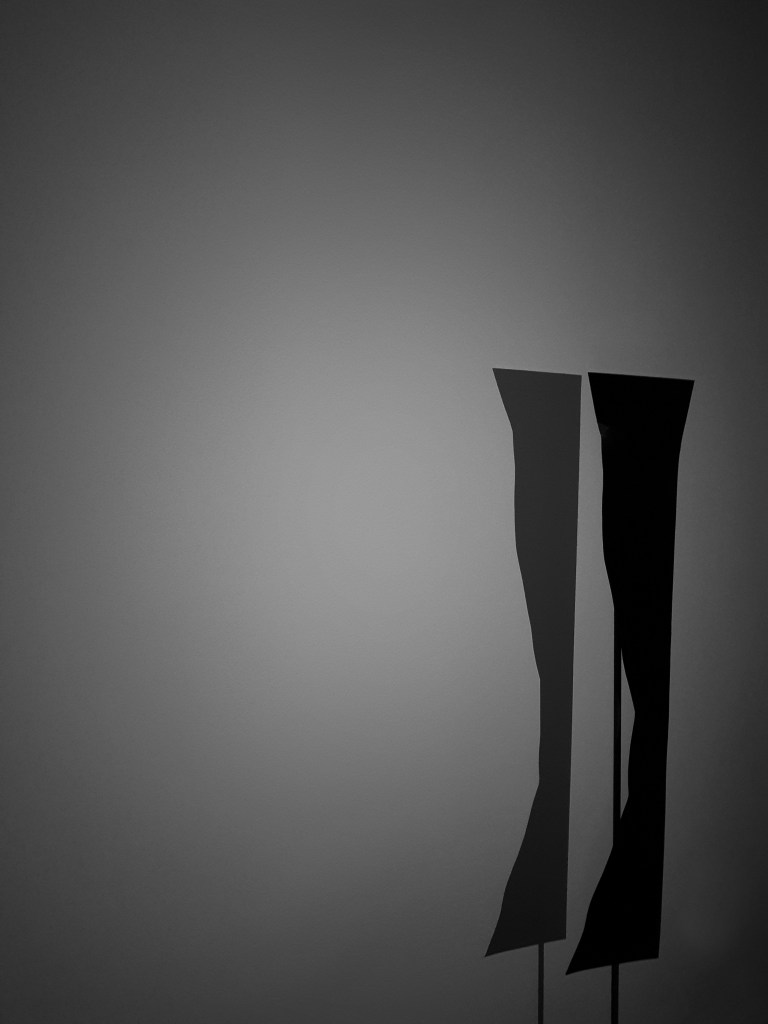
João: Thank you for sharing your fears and anguishes. Thank you for being an artist and continuing to hold up against giving in to what haunts you. We are not alone in our fears because that which lays its shadow on us is that same that darkens in the other person. I believe these shadows are important because they help us in this process of vision, and through them we can reconfigure and rebuild our perception. In the past year, I began to develop a process of drawing in the dark and thinking up the forms that come from there…
It is not my intention to delineate a silhouette, but to think of these shadows as indexes, as autonomous, as forms that claim something that is only perceptible in this interplay between opacity and transparency. This first process resulted in a series of metal engravings called ‘aquela paisagem distant que você atravessou’ [‘that distant landscape you crossed’], and it puts in focus this unrecognised body, in an attempt to invent(ory) a territory’s plain which its shadow imprints when it comes between light and paper. A printed map of shadows and clearings, found along some path. Lately, I have been working with industrial rubber and the process, now three-dimensional, consists in cutting, in this rubber and in other kinds of plastics I have been researching, the shapes that appear in the drawings … The idea is for all of this to become a big installation. I have also been thinking about the materials I am using with this relationship in mind, such as charcoal and graphite, which are opaque, impermeable, non-diaphanous; and then tracing paper, transparent, translucent. I have reached the conclusion that it is through giving form that I understand, so I think that giving form to my shadows is a way of dealing with my fears…
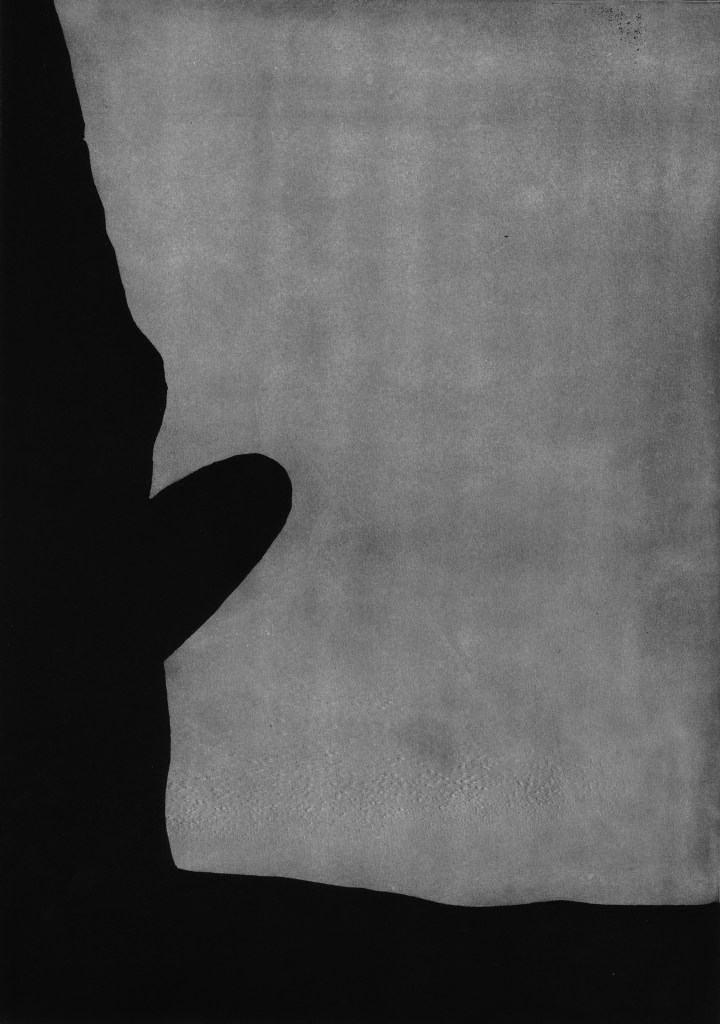
Anyway, we will soon be able to talk in person about all of these issues, because you’re coming to Brazil for “Perto de Lá / Close to There” Do you already know what you intend to work on during the residency? What are your expectations? I want to know everything.
Amina: I want to know everything too! I am also intentionally leaving much of my work to be determined while I am there. I too am excited to meet in person. In this moment I have a few hauntings and curiosities. I’m planning on researching, gathering footage of water, and visiting churches, among other things. Although I don’t know exactly what I will be exploring, there are a few subjects that interest me. I’m interested in dreams, meditation, and ancestor reverence. I am investigating the relationship between sacredness and the moving image, and the physical and metaphysical architecture of sacred space. I’m also interested in the orisha Yemanja, within a philosophical context, and in exploring my own family connection to collectivity, worship, and the practice of Yoruba-diasporic spirituality.
I’ll see you soon!
Featured Image: Still from “Etheric Bridge (Winter’s Grief),” by Amina Ross. Image courtesy of the artist.

Marina Resende Santos is a guest editor for a series of conversations between participants of “Close to There <> Perto de Lá”, an artist exchange program between Salvador, Brazil and Chicago organized by Comfort Station (Chicago), Projeto Ativa (Salvador) and Harmonipan (Mexico City) between 2019 and 2020. Marina has a degree in comparative literature from the University of Chicago and works with art and cultural programming in different organizations in the city. Her interviews with artists and organizers have been published on THE SEEN, South Side Weekly, Newcity Brazil, and Lumpen magazine.
